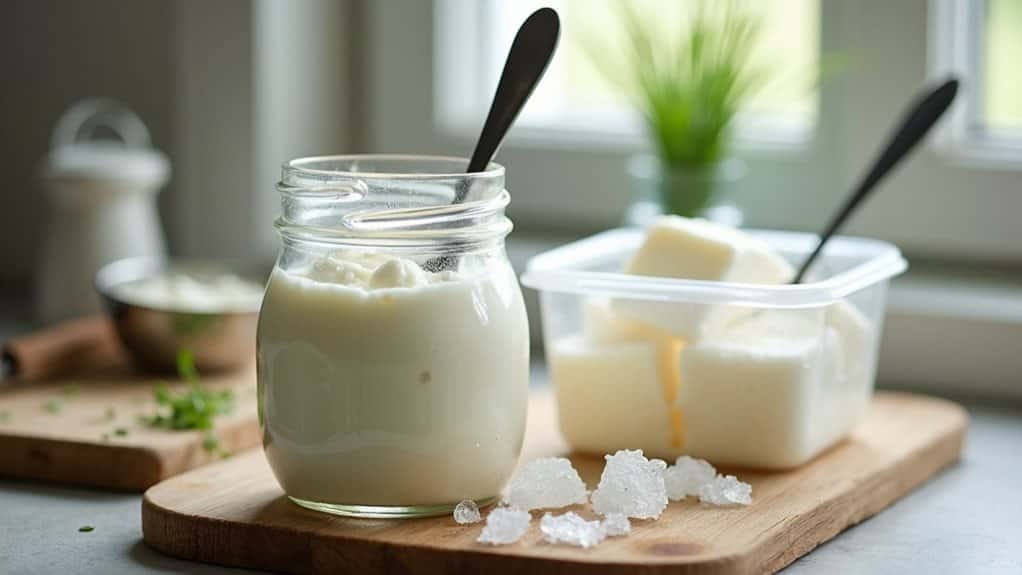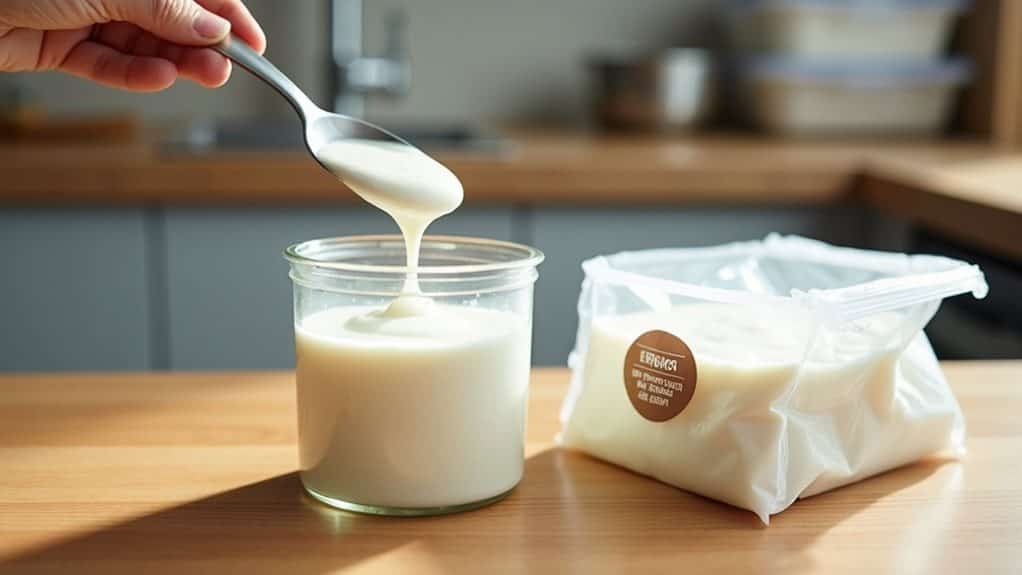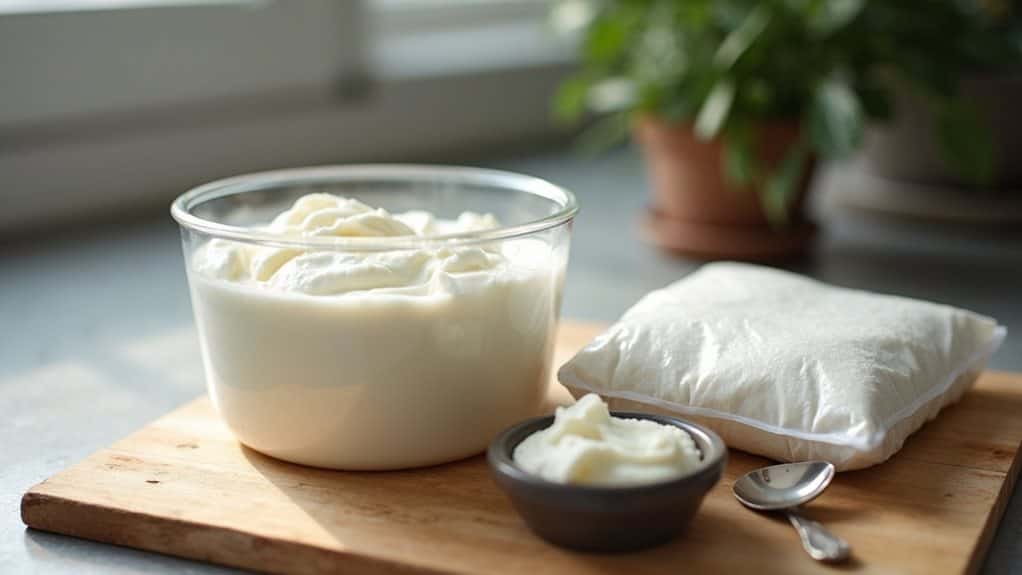Yes — you can freeze sour cream to extend its life, but expect texture changes: freezing separates fat and water, making it grainy or watery when thawed. Freeze unopened tubs or transfer to airtight, freezer-safe containers or portion into ice-cube trays, leaving headspace for expansion. Thaw in the fridge 24–48 hours, drain whey and whisk or add a thickener to improve consistency, then use within 3–5 days; best for cooked dishes and sauces, and more tips follow below.
Quick Guide
- Yes — you can freeze sour cream safely if it’s fresh and stored in airtight, freezer-safe containers before its expiration date.
- Expect texture changes: thawed sour cream often becomes grainy, watery, or separated due to fat and water separation.
- Portion into small containers, ice cube trays, or bags and leave headspace to speed thawing and reduce waste.
- Thaw in the refrigerator 24–48 hours, drain whey, then whisk or add a thickener to improve consistency.
- Use thawed sour cream within 3–5 days, preferably in cooked dishes, sauces, or baked goods rather than as a plain topping.
Is It Safe to Freeze Sour Cream?

If you handle it properly, freezing sour cream is safe and won’t create food-safety risks. It’s important to remember that sour cream is a perishable dairy product and should be treated with care. You can freeze unopened tubs or move sour cream into airtight, freezer-safe containers, label them, and freeze before the expiration date. Thaw in the refrigerator, use within a few days, and don’t refreeze. Follow refrigeration guidelines and keep temps at or below 40°F (4.4°C) before freezing. Frozen sour cream is safe but will often develop a grainy texture.
How Freezing Affects Texture and Flavor
While freezing won’t make sour cream unsafe, it does change how it feels and behaves: the fat and water separate during freezing and thawing, so the once-smooth cream often becomes grainy, lumpy, or thin and watery, much like a crumbly cottage cheese. To minimize this effect, it’s best to use medium power settings when reheating frozen sour cream. You can whisk or add a thickener to improve texture, and the tangy flavor mostly stays intact for cooked or mixed uses. This makes frozen sour cream best used in cooking and baking rather than eaten alone.
Best Ways to Freeze Sour Cream

When you decide to freeze sour cream, choosing the right method up front will make a big difference in both quality and convenience, so plan how you’ll store and use it before you start.
Freeze unopened tubs before the expiration date, but double-bag or transfer to freezer-safe containers.
Portion into ice cube trays for recipes, label with dates, and use within 2–3 months for best quality. Additionally, be aware that proper storage practices are essential to extend the shelf life of frozen dairy products.
How to Thaw and Use Thawed Sour Cream
Although frozen sour cream isn’t ruined, you’ll need to thaw it carefully to preserve safety and get the best possible texture.
Thaw in the refrigerator 24–48 hours, or use small frozen portions for faster defrosting.
Drain any separated whey, then whisk to recombine. Be mindful that defrosted yogurt may separate, affecting the overall consistency.
Keep refrigerated, use within 3–5 days, and never refreeze; check for off odors or mold before using.
Practical Tips and Recommended Uses

For practical freezing and use, plan ahead and portion your sour cream so you only thaw what you need; airtight containers, freezer bags, or small molds like ice cube trays and muffin tins help prevent freezer burn and make portions easy to grab. Label with dates, leave headspace for expansion, and use within 2–3 months. Thawed sour cream works best in cooked dishes, batters, sauces, and soups, and it’s important to note that proper storage practices can enhance its shelf life.
Wrapping Up
You can freeze sour cream safely, but expect changes in texture and a slight loss of creaminess once it thaws. For best results, freeze in an airtight container or portion into ice cube trays, leaving room for expansion, and use within two months. Thaw overnight in the fridge and stir or whip to recombine separated liquids. Use thawed sour cream in cooked dishes, dips, or baking rather than as a fresh topping, and discard if it smells off.


